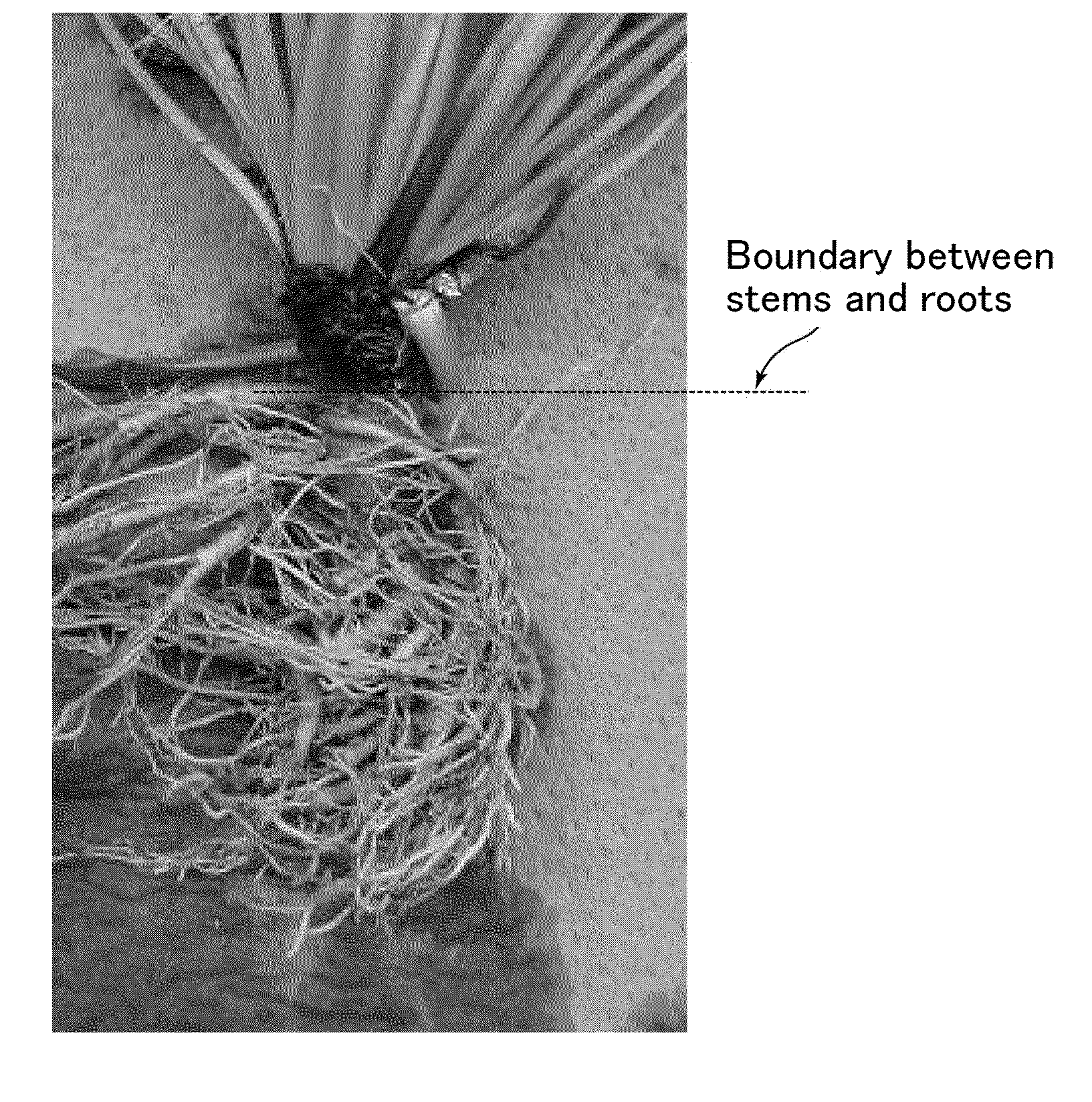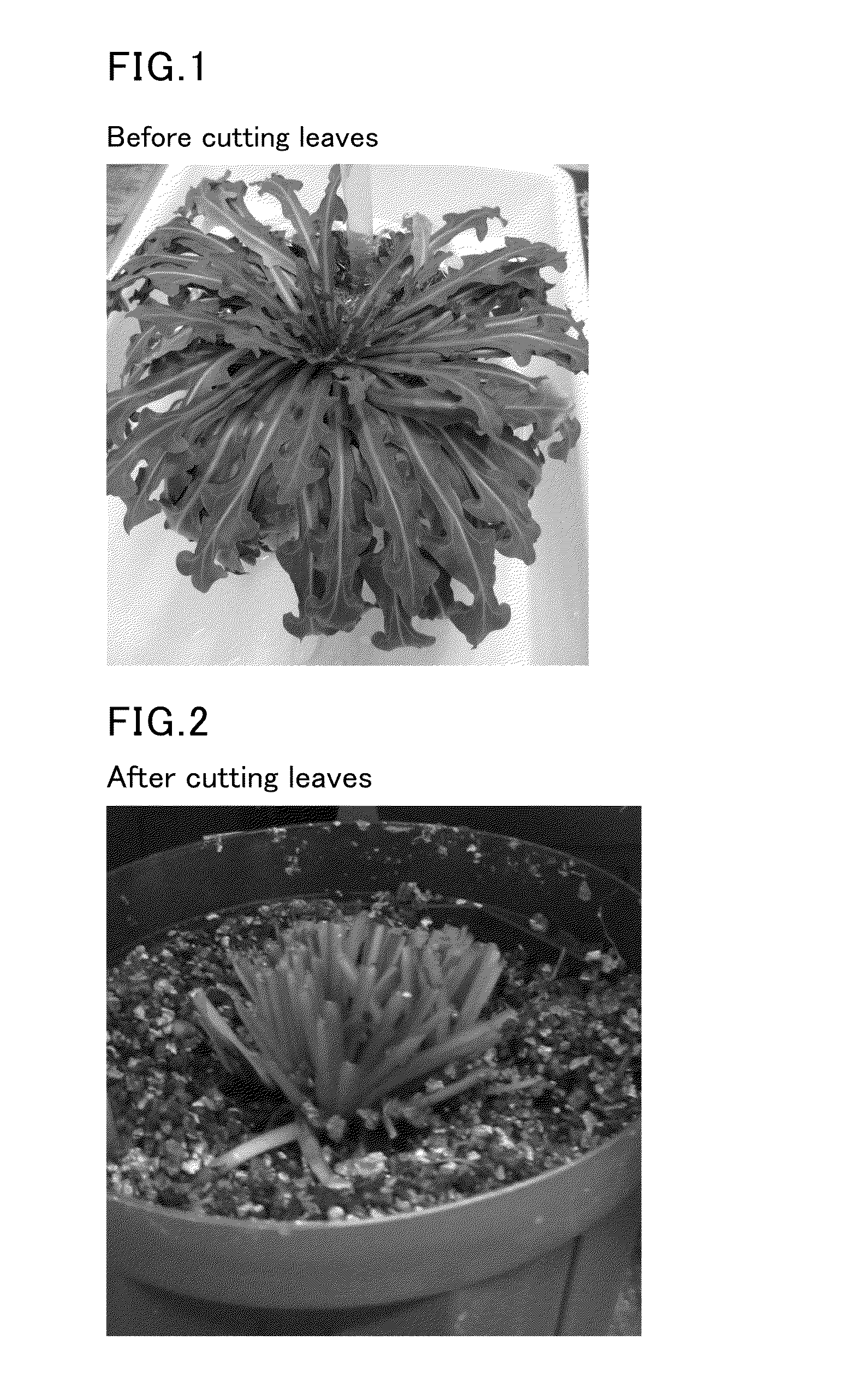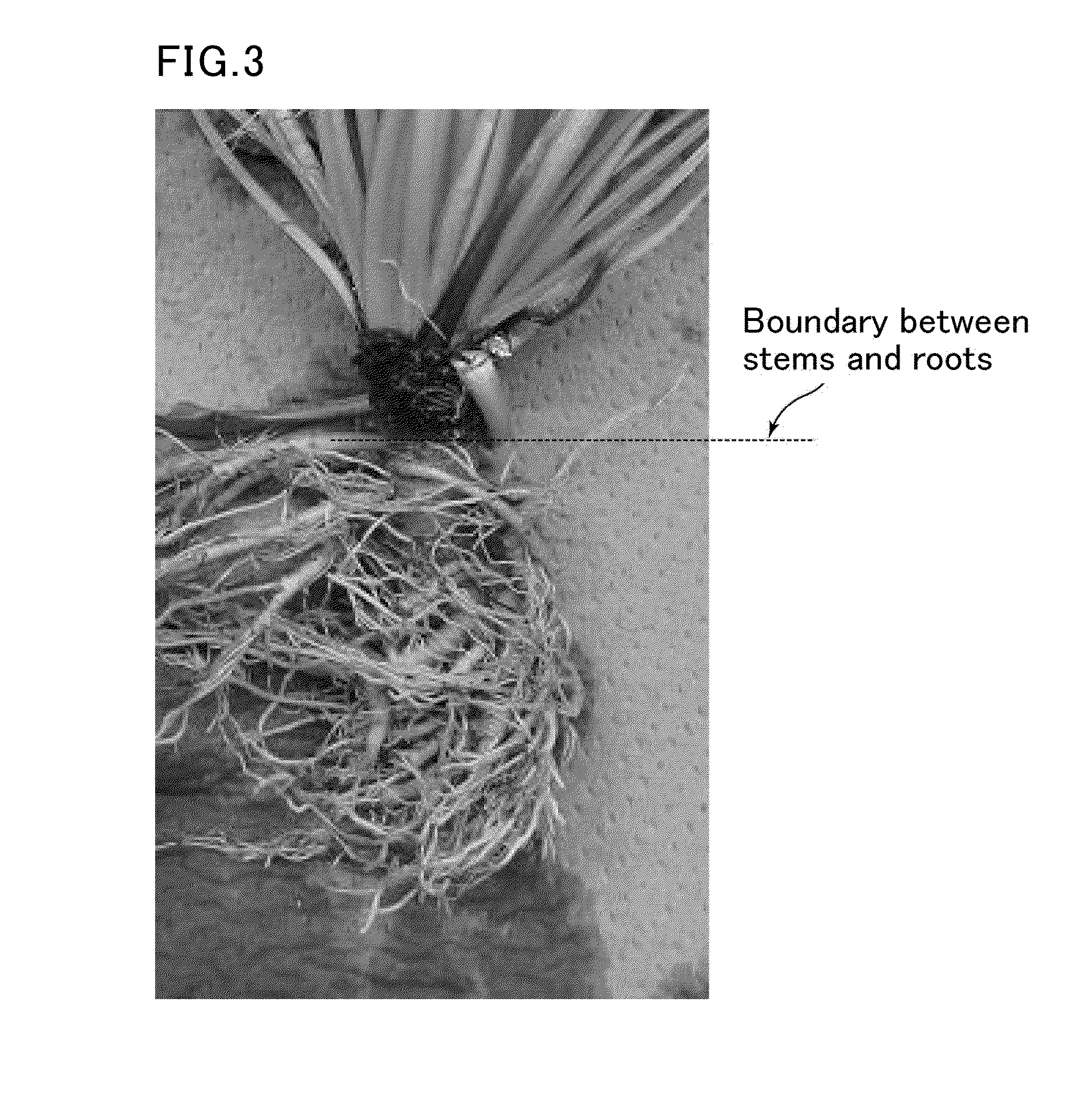Method for extracting latex, method for cultivating plant of asteraceae family, method for producing pneumatic tire, and method for producing rubber product
a technology of asteraceae and extractor, which is applied in the field of extracting latex, can solve the problems that the method of extracting latex and the method of cultivating i>taraxacum kok/i>-i>saghyz/i> have not been investigated in detail, and achieve the effect of increasing the amount of latex extracted per individual, reducing water absorption of the plant, and high latex extraction efficiency
- Summary
- Abstract
- Description
- Claims
- Application Information
AI Technical Summary
Benefits of technology
Problems solved by technology
Method used
Image
Examples
examples
[0082]The present invention is specifically described with reference to, but not limited to, examples.
[0083]Seeds of Taraxacum kok-saghyz (KAZ08-015) were vernalized at 4° C. for two or more days, and then planted in soil.
[0084]After the planting, they were cultivated at 23° C. under a cycle of 16 hours light / 8 hours dark for three months. The illuminance at the level of the leaves under the light conditions was kept at 7000 to 8000 lx. The illuminance at the level of the leaves under the dark conditions was kept at 1 lx or less.
[0085]The roots of the Taraxacum kok-saghyz grown for three months after seeding were cut and latex was extracted from the cut roots. The roots were cut at intervals of about 5 mm starting from the tips of the roots until each root left on the plant had a length of 3.0 cm, and latex was extracted from the cut roots.
[0086]The extracted latex was immersed in ethanol for five hours, so that natural rubber was coagulated.
[0087]The coagulated natural rubber was d...
PUM
| Property | Measurement | Unit |
|---|---|---|
| length | aaaaa | aaaaa |
| length | aaaaa | aaaaa |
| temperature | aaaaa | aaaaa |
Abstract
Description
Claims
Application Information
 Login to View More
Login to View More - R&D
- Intellectual Property
- Life Sciences
- Materials
- Tech Scout
- Unparalleled Data Quality
- Higher Quality Content
- 60% Fewer Hallucinations
Browse by: Latest US Patents, China's latest patents, Technical Efficacy Thesaurus, Application Domain, Technology Topic, Popular Technical Reports.
© 2025 PatSnap. All rights reserved.Legal|Privacy policy|Modern Slavery Act Transparency Statement|Sitemap|About US| Contact US: help@patsnap.com



